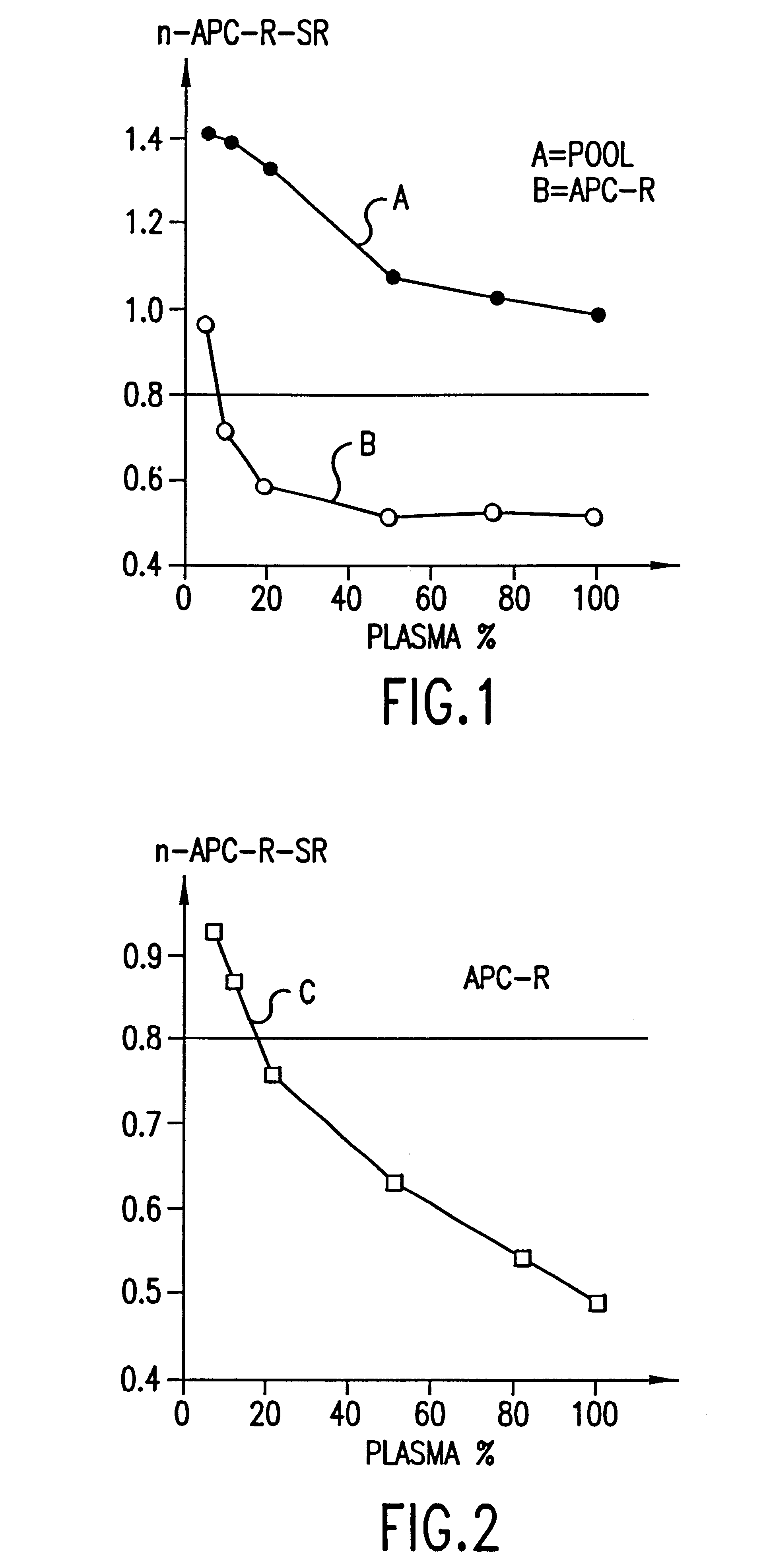Process for determining a resistance to activated protein C
a technology of activated protein and resistance, which is applied in the field of process for determining the resistance to activated protein c, can solve the problems of easy measurement, time with a fully automatic apparatus, and too many false negatives and false positives
- Summary
- Abstract
- Description
- Claims
- Application Information
AI Technical Summary
Benefits of technology
Problems solved by technology
Method used
Image
Examples
example 1
Obtaining the Human Plasma for Testing The plasma is drawn into an 0.102 M solution of trisodium citrate, at the rate of 1 volume of citrate per 9 volumes of blood. The specimen is then centrifuged at 3500 g for 15 minutes at 4.degree. C. It is recommended to perform a double centrifugation at 4.degree. C. so as to eliminate any platelets from the specimen. The separation and collection of the plasma must be performed as quickly as possible after drawing.
After decantation the plasma can be stored at
2-8.degree. C. for 8 hours.
15-19.degree. C. for 8 hours, and
-20.degree. C. for 1 month.
For thawing, the plasma must be thawed at 37.degree. C. in a thermostat-controlled water bath for at least 10 minutes, then homogenized before use. Refreezing a plasma is to be ruled out.
example 3
Preparation and Preservation of the Reactants
First Reactant (R1)
R1 is a lyophilized human plasma immunodepleted of factor V and enriched with PL. The lyophilized product is made into an aqueous composition with 2 ml of distilled water. The resultant solution is homogenized at the ambient temperature (18-25.degree. C.) before use.
This solution is stable at
18-25.degree. C. for 6 h
15-19.degree. C. (in the automatic analyzer sold under the trademark "STA" by the Diagnostica Stago company) for 38 h
2-8.degree. C. for 26 h, and
-20.degree. C. for 1 month
Second Reactant (R2)
R2 is the lyophilizate of CVH. This lyophilized product is made into an aqueous composition with 2 ml of distilled water (which can advantageously contain 1% v / v of PB). The resultant composition is homogenized at the ambient temperature (18-25.degree. C.) before use.
This composition is stable at:
18-25.degree. C. for 6 h
15-19.degree. C. in the STA analyzer for 38 h
2-8.degree. C. for 26 h and
-20.degree. C. for 1 month.
Thir...
PUM
| Property | Measurement | Unit |
|---|---|---|
| temperature | aaaaa | aaaaa |
| temperature | aaaaa | aaaaa |
| temperature | aaaaa | aaaaa |
Abstract
Description
Claims
Application Information
 Login to View More
Login to View More - R&D
- Intellectual Property
- Life Sciences
- Materials
- Tech Scout
- Unparalleled Data Quality
- Higher Quality Content
- 60% Fewer Hallucinations
Browse by: Latest US Patents, China's latest patents, Technical Efficacy Thesaurus, Application Domain, Technology Topic, Popular Technical Reports.
© 2025 PatSnap. All rights reserved.Legal|Privacy policy|Modern Slavery Act Transparency Statement|Sitemap|About US| Contact US: help@patsnap.com



